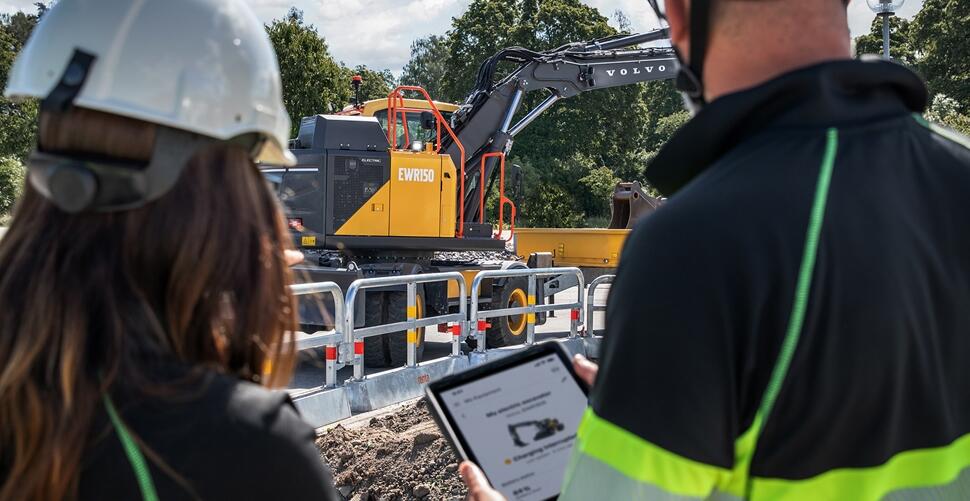Which batteries are used in electric machines?

Lithium-ion battery: Used in most EVs today, including Volvo electric machines thanks to their excellent efficiency, strong high temperature performance and high power-to-weight ratio. There are different chemistry types and mixes, though. Lithium-ion batteries use lithium ions to transfer electrical energy (electrons) between the cathode (+) and Anode (-) sides of the batteries. They have no memory effect, low self-discharge and can be charged quickly.
Battery chemistry: Refers to the materials used in the cathode of a battery. In today’s EV’s these are usually lithium along with other metals.
NMC battery: A Lithium-ion battery that uses lithium, nickel, manganese and cobalt as the cathode material.
LFP battery: A Lithium-ion battery that uses lithium-phosphate as the cathode material.
NCA battery: A Lithium-ion battery that uses nickel, cobalt and aluminium as the cathode material.
Lead Acid Battery: Traditionally used in automotives, lead-acid batteries use one porous lead anode (-) and a lead dioxide cathode (+), immersed in a sulfuric acid electrolyte. They are used in Volvo electric machines to provide auxiliary electric energy for control systems, lights and auxiliary components and can be trickle-charged from the main lithium-ion battery using an onboard converter.
Battery Management System: A crucial part of EVs, the battery management system manages, safeguards, and monitors the battery to protect it from misuse and damage, prolong its life and ensure it is always ready for use.
Thermal Management System: Another vital part of an EV, the thermal management system regulates temperatures and ensures optimal performance.
Energy recouperation: When a vehicle slows down or brakes, usually some of the kinetic energy from the vehicle is lost. Energy recouperation recovers the energy that would otherwise be lost and puts it back into the battery.
State of Health (SoH): An estimated measure of the overall health of the battery. Unfortunately, batteries don’t last forever and over time their storage capacity begins to slowly reduce. This is a normal process that is influenced by factors such as temperature, amount of use and how often it has been charged and discharged.

On Board Charger (OBC): A component on an EV that converts AC input to the DC current that is needed for charging.
Power Distributor Unit (PDU): An essential part of an EV’s electrical system, it acts as a traffic manager for the vehicle’s power to ensure that the right amount reaches the right places for the machine to operate.
Want to learn more? Stay ahead of the game by diving into extensive resources on charging and electric vehicles.




